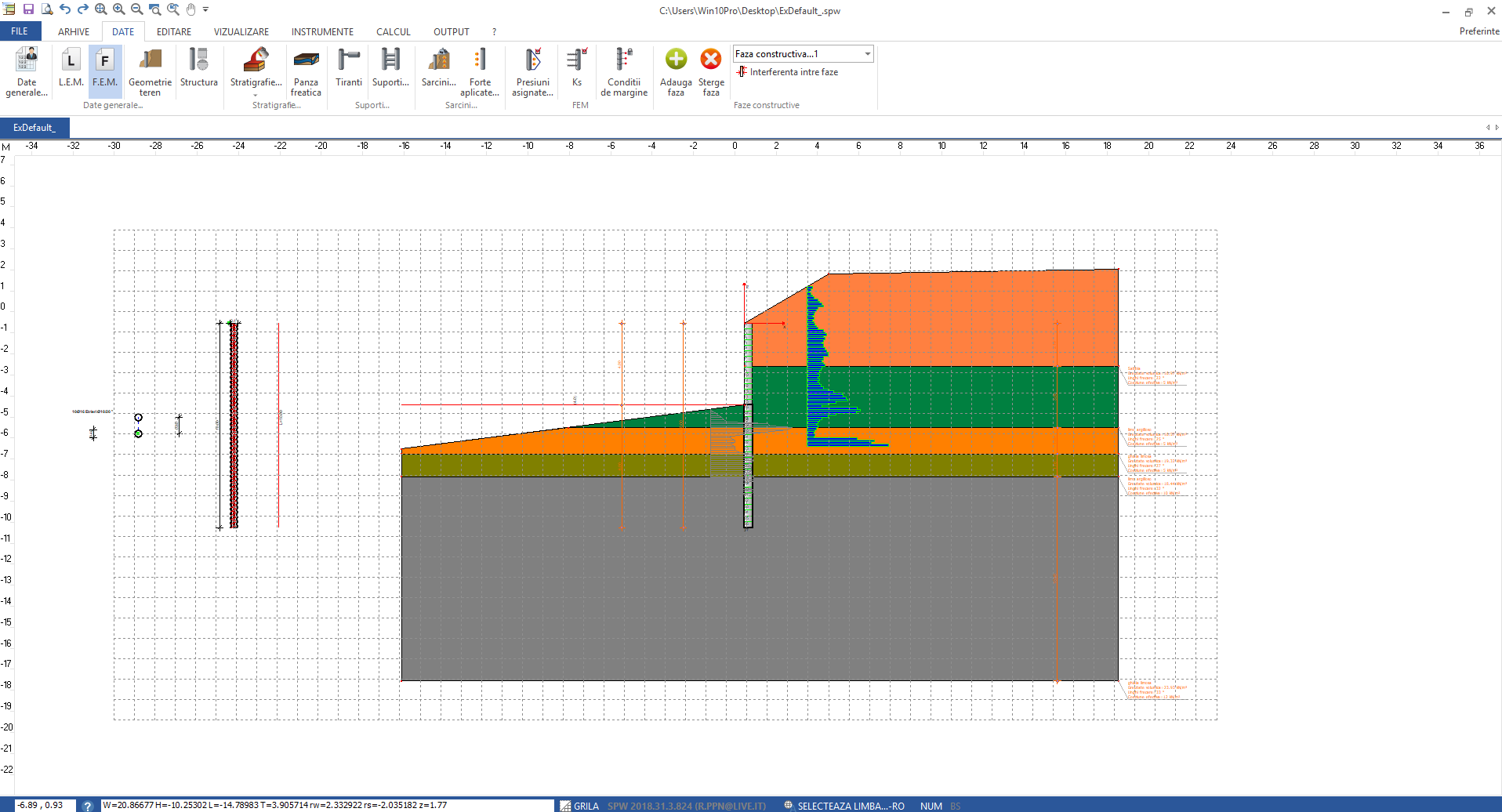The bulkheads are made up of a relatively thin vertical structure, driven into the ground up to a certain depth underneath the dredge level, so as to obtain a support solid enough to oppose the thrusts of the ground, of water and of possible overloads. This type of supporting structure can be made up of prefabricated and embedded sheet piles, drilled piles, diaphragms in reinforced concrete constructed in site and sometimes also of reinforced concrete panels.

The most widely used calculation methods are the following:
•Limit Equilibrium Method (LEM)
•Finite-elements Method (FEM)
While the limit equilibrium method is based on considerations which are only and exclusively of static nature, for the finite-elements method considerations also based on the congruence of the deformations (the FEM method is thus a more rational method). The mentioned methods have a growing complexity both from the numerical point of view and in terms of preliminary operations for the calculation. In fact, while for the LEM method it is necessary to know the classical properties of the soil (angle of internal friction, etc.) for the FEM method it is also necessary to estimate the modulus of subgrade reaction of the ground and characterize its possible non-linear behaviour. The SPW software allows to perform the analysis of cantilever, anchored or braced bulkheads according above mentioned calculation methods.
GENERAL FEATURES (As regards the software input)
SPW software is able to analyze the models that are representative for most of the problems met in current practice. From a general point of view (we will go into details in the following sections), the main features of the input are the following:
•Materials that constitute the bulkhead (Materials archive)
•Sections of the vertical structure (Sections archive)
•Anchorage stringcourses
•Anchors (Anchors archive)
•Management of settings related to the reinforcement of the structure (Reinforcements options)
•Calculation methods (Limit equilibrium, Finite-elements)
•Soil model geometry (treatable both in terms of coordinates of vertices and in terms of angles and distances)
•Soil properties (it is possible to define different soil properties an consider different stratifications)
•It is possible to consider the presence of the groundwater, also for filtration studies and consequently siphoning checks
•Acting loads, treated both by means of concentrated loads and loads divided by stripes, lines or uniform loads
•Analysis phases. It is possible to define different scenarios of cementation of the structure, referring to analysis phases which can change by stratigraphy, materials features, imposed restrictions, loads, etc.
GENERAL FEATURES (As regards the calculation phase)
•Analysis achievable with the limit equilibrium method and the finite-elements method
•Analysis achievable for more loads combinations and for different analysis phases
•Calculation of the pressures due to the presence of the groundwater, external loads, etc.
•Analysis of the stresses on a continuous beam or the head beam or the anchoring beam
•Metrical computation
•Global stability analysis (using the methods: Fellenius, Bishop, Janbu, Bell, Sarma, D.E.M.)
•Bulkhead sections
•Determination of the flow grid and calculation of the filtration flow rate
GENERAL FEATURES (As regards the output phase)
•Display of the horizontal pressures and stresses diagrams
•Results of the bulkhead structural analysis in terms of checks or section design
•Generation of technical reports (including theoretical notes) selective with respect to the subjects to be printed (it is possible to print theoretical notes, input data, calculation output)
•Generation of complete graphic printouts in which are defined the measures, quantities and shaping of the reinforcements resulting from the calculation
© GeoStru